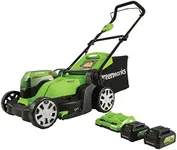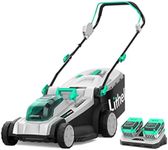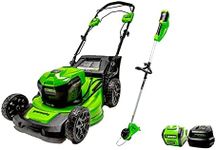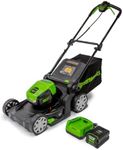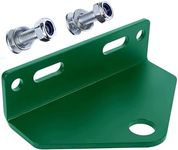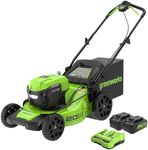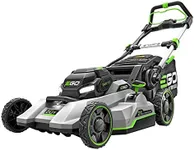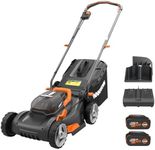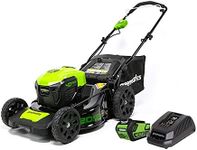Buying Guide for the Best Cordless Mulching Mower
Choosing a cordless mulching mower can make lawn care much easier and more convenient, especially if you want to avoid the hassle of cords or gas. The right mower for you will depend on the size of your lawn, the type of grass you have, and how often you mow. It's important to understand the key features that affect performance, ease of use, and maintenance so you can select a mower that fits your needs and makes mowing a more enjoyable task.Battery Voltage and CapacityBattery voltage and capacity determine how powerful the mower is and how long it can run before needing a recharge. Higher voltage usually means more cutting power, which is helpful for thicker or taller grass. Capacity, measured in amp-hours (Ah), tells you how long the battery will last on a single charge. For small lawns, a lower voltage and capacity may be enough, but for larger or tougher lawns, look for higher values to avoid frequent recharging.
Cutting WidthCutting width refers to how wide a strip of grass the mower can cut in one pass. Wider cutting widths let you mow your lawn faster because you cover more ground with each pass, but they can make the mower heavier and harder to maneuver in tight spaces. If you have a small or intricate lawn, a narrower width may be easier to handle, while larger, open lawns benefit from a wider cutting width.
Mulching CapabilityMulching capability is the mower's ability to finely chop grass clippings and return them to the lawn as natural fertilizer. Some mowers are designed specifically for mulching, while others offer it as an option alongside bagging or side discharge. If you want to improve your lawn's health and reduce yard waste, prioritize a mower with strong mulching performance. Check for features like specialized mulching blades or adjustable mulching settings.
Adjustable Cutting HeightAdjustable cutting height lets you choose how short or tall you want your grass to be after mowing. This is important because different grass types and seasons may require different mowing heights for optimal health. Most mowers offer a range of height settings, usually adjusted by a lever. If you want flexibility or have specific lawn care needs, look for a mower with a wide and easy-to-change height range.
Weight and ManeuverabilityThe weight of the mower affects how easy it is to push and turn, especially on uneven ground or around obstacles. Lighter mowers are easier to handle but may be less powerful, while heavier models can be more stable but harder to maneuver. Consider your own strength and the layout of your lawn when choosing the right balance between weight and maneuverability.
Battery Charging TimeBattery charging time is how long it takes to fully recharge the battery after use. Shorter charging times mean less waiting between mowing sessions, which is helpful if you have a large lawn or need to mow frequently. If you don't want to wait long, look for mowers with fast-charging batteries or consider buying a spare battery to swap in as needed.
Noise LevelNoise level is how loud the mower is during operation. Cordless mowers are generally quieter than gas models, but there can still be differences. If you live in a quiet neighborhood or prefer to mow early or late in the day, a quieter mower can be a better choice for you and your neighbors.

